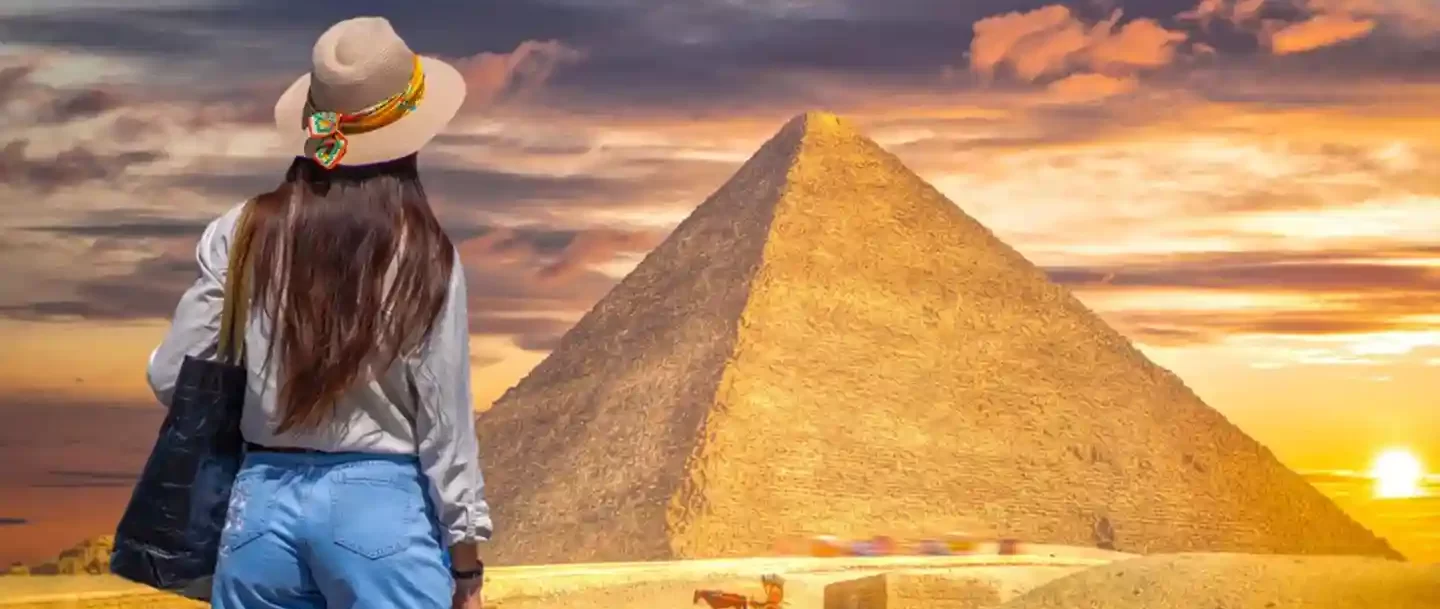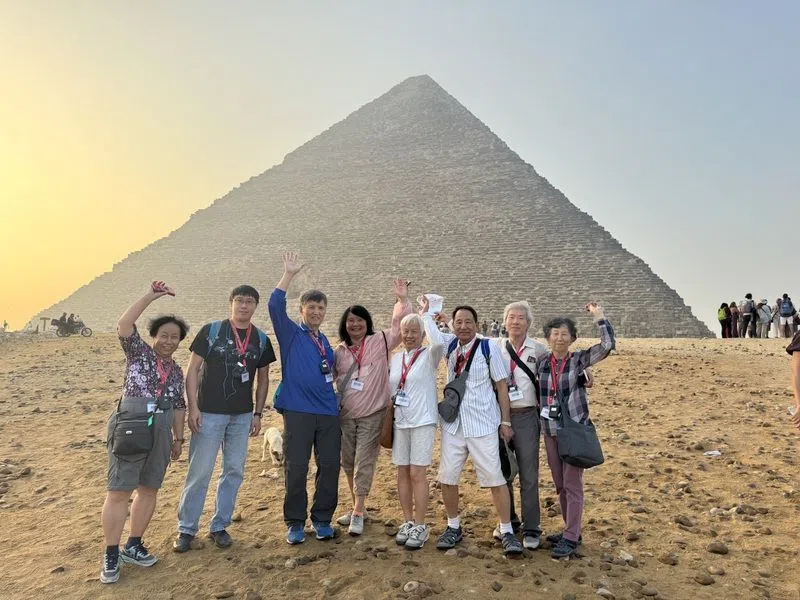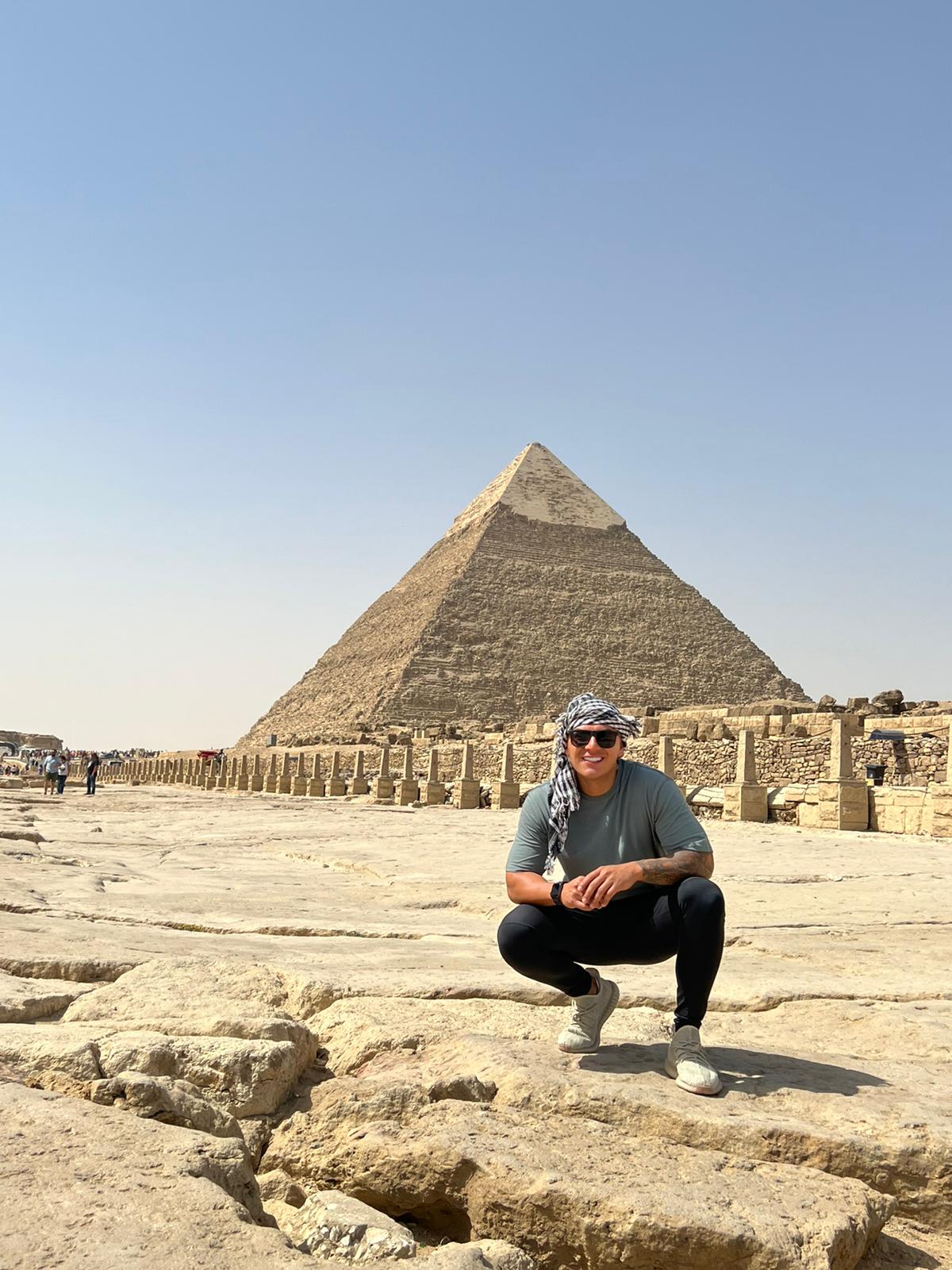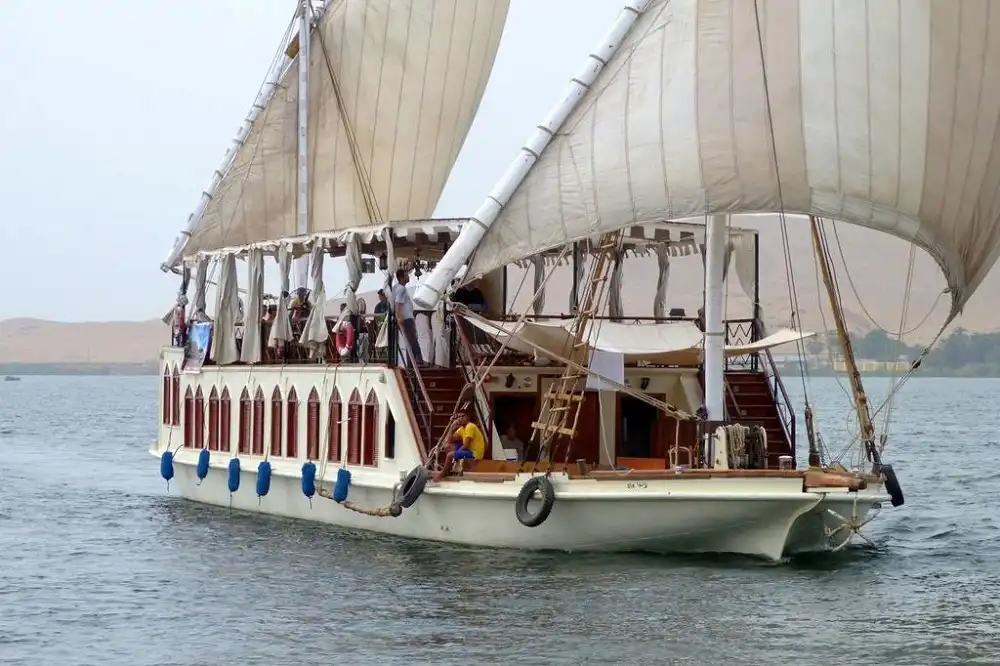12 Day
Everyday
Your Hotel
6 Attractions
Tour Description
12 Days tour Ultimate Luxury Cairo and Red Sea El Gouna Explore Cairo’s top historical attractions. A 12-day Luxury Nile cruise and Cairo tour will allow you to see Luxor and go to Aswan in ultimate style. A ten-day luxury Nile cruise and a grand tour of Cairo would delight even the pickiest tourists. Visit the earliest pyramid ever found at Saqqara, take a guided tour of the well-known Giza pyramids, and then take a luxurious flight to Luxor for your cruise. As you sail towards Aswan, take in all of Luxor’s historical treasures. Enjoy the various attractions that Aswan has to offer, such as the magnificent Temple of Philae, which was saved from the rising waters of Lake Nasser during the construction of the Aswan High Dam. Say goodbye to this historic land as you return to Cairo.
Included
- The assistance of our guest relations during your stay.
- All transfers by air-conditioned vehicle.
- Accommodation for 3 nights in Cairo including breakfast.
- Ultimate Accommodation for 4 nights on 05 stars deluxe Nile cruise on full board.
- Luxury Accommodation for 4 nights in Hurghada including daily breakfast.
- tours in Cairo are private as in the itinerary.
- All sightseeing tours on the cruise share the cruise group.
- sightseeing tours in Cairo, Luxor, Aswan, and Hurghada as mentioned in the itinerary.
- Entrance fees to all sites as indicated in the itinerary.
- professional Tour guide throughout your tours.
- All service charges & taxes.
Not Included
- Domestic flight (Cairo – Aswan- Hurghada– Cairo).
- extra expenses not mentioned
- tipping
Tour Itinerary
Day 1: Arrival Cairo
Cairo airport

Explore Cairo’s top historical attractions. A 12-day luxury Nile cruise and Cairo tour will allow you to see Luxor and go to Aswan in ultimate style. A ten-day luxury Nile cruise and a grand tour of Cairo would delight even the pickiest tourists. Visit the earliest pyramid ever found at Saqqara, take a guided tour of the well-known Giza pyramids, and then take a luxurious flight to Luxor for your cruise.
As you sail towards Aswan, take in all of Luxor’s historical treasures. Enjoy the various attractions that Aswan has to offer, such as the magnificent Temple of Philae, which was saved from the rising waters of Lake Nasser during the construction of the Aswan High Dam. Say goodbye to this historic land as you return to Cairo.
Day 2: Pyramids / Sakkara
step pyramid

The structure consists of six distinct layers, or steps, of diminishing size built on top of one another. Archeologists understand this to be an embellishment of earlier and earlier practices where pharaohs were buried under a mastaba, a flat rectangular structure somewhat like a large grave covering.
Djoser’s builders decided to stack several of these structures to create a more imposing monument to the pharaoh, creating the structure we see today that stands 203 feet tall. In doing so, they took the first step toward the creation of the pyramids that have made Ancient Egypt famous throughout the ages.
Giza pyramids

Chefren, and Mykerinus at Giza Plateau. Then proceed to visit the Great Pyramid. The head of a pharaoh with a lion’s body dates from the time of Chephren. also includes a visit to the Valley Temple, which belongs to the Pyramids of Chephren.
The Great Pyramids
The number one activity in Cairo is by far the Great Pyramids of Giza and the Great Sphinx. Dated almost 5000 years ago, these monuments and their great conservation state are some of the greatest things you can experience with the naked eye. Located in the Giza Complex on the west side of the Nile River banks, the Great Pyramids and the Great Sphinx are Cairo’s best-kept treasures.
It has many tombs. It consists of the great Giza Pyramids (Khufu, Khafre, and Mankaure), which are considered one of the seven wonders of the world, and the Khufu Pyramid is considered to be the grandest in the complex. This complex also contains the amazing Sphinx and the Valley Temple. It's an astonishing engineering accomplishment, as it's the greatest pyramid that has ever been built. It was built by King Khufu. It contains about 2300000 blocks. These white Tura limestone blocks give the pyramid a smooth surface.
The Great Sphinx
It is the oldest known monumental sculpture in the world, and all tourists come from around the world to witness the beauty of its shape (ahead of a man's head) and the body of a human, which has many spiritual and mythical meanings.
Evening trip to attend the Sound & Light show in the Pyramids area included. Overnight in Cairo.
Day 3: Cairo/ Aswan Nile Cruise
Aswan airport

Breakfast, then transfer to Cairo Airport for a flight to Aswan, where you will be met and transferred to embark on your Nile cruise before lunch. Sail on the Nile by Felucca around Kitchener’s Island and Agha Khan Mausoleum. Afternoon Tea. Dinner on board and a Nubian Folkloric Show. Overnight in Aswan.
Day 4: Aswan Tours/ Kom Ombo
Breakfast on board, then head to visit the
High Dam

The dam was completed in 1971 and the huge reservoir behind it, named for President Nasser, finished filling in 1979.
Philae Temple

This beautiful temple complex is one of the most picturesque in all of Egypt. It sits on Aglika Island just south of the old Aswan Dam and you must ride a water taxi to the island to get to the ruins. The temple was moved to its current location following the construction of the High Dam, which threatened to submerge it permanently.
The careful reconstruction at the current site was carefully completed, painstakingly preserving the original appearance and layout of the complex and even landscaping the island to match its former location. back to the cruise enjoy your lunch have a small nap then prepare yourself for the afternoon adventure Sail to Kom Ombo. buffet Lunch during sailing
Kom Ombo temple

Along with Esna and Edfu, Kom Ombo is the third major stop that most of the Nile cruises between Luxor and Aswan make on their journey. Located only 30 miles north of Aswan, it is also easy to visit Kom Ombo on a day trip by car, however, The setting of this Temple of Sobek, the crocodile god, makes an approach by water the far superior way to visit this site.
The temple is perched atop a picturesque bluff alongside the river, and while there are no longer any crocodiles in the river or in the sacred lake inside the temple complex, this riverside temple is still worth a visit. Like the other two sites between Luxor and Aswan, Kom Ombo dates from the Ptolemaic Dynasty and it was only completed under Roman rule. The temple has a dual dedication to Sobek, and Horus, and the plan of the temple reflects this dual purpose.
Enjoy afternoon tea, and Captain’s welcome cocktail (smart casual attire). Dinner on board and disco. Overnight on board at Edfu.
Day 5: Edfu Temple
Edfu temple

Breakfast on board, head to visit The Temple of Horus at Edfu is widely considered to be the most impressive of all of the Nile-side temples along the journey between Luxor and Aswan. It is a required stop by all of the cruise ships that make the trip, also stopping at Esna and Kom Ombo.
Like at Esna, the temple at Edfu is a late construction. It was built during the Greco-Roman Period, but the builders painstakingly preserved the form of Egypt’s true pharaohs. As a result, a visit to Edfu allows you to see what all of the other ruined temples around Egypt might have looked like had they been built 2,000 years later.
sail to Luxor. Lunch is on board. afternoon tea. Dinner on Board and Galabya party. Overnight in Luxor.
Day 6: Luxor West Bank
Firstly, Breakfast on board then gets excited by visiting the West Bank;
Valley of the Kings.

Start your day with an impressive breakfast meal, and then join our Egyptologist tour guide on a tour to visit the gorgeous Luxor tourist attractions, starting with Its royal burials are located in the West Bank of Luxor, which has 24 terrific royal tombs and, in total, 64 tombs, according to the last discovery in 2008–2014.
It's the final resting place of Egypt's rulers from the 18th to the 20th dynasty; it is home to tombs, including those of the great Pharaoh Ramses II and King Tutankhamun. The tombs were well stocked with all the material goods a ruler might need in the next world. Most of the decoration inside the tombs is still well-preserved.
Hatshepsut Temple

It is a mortuary temple at Deir El-Bahri. It was built by Queen Hatshepsut, who is considered to be one of the most formidable women in Ancient Egypt. The queen is distinguished as one of the most successful pharaohs of Ancient Egypt, but she was not the only female ruler in Egypt's history. Her reign was peaceful and prosperous, and as a result, it witnessed a wide variety of achievements; one of them was her own mortuary temple, which commemorates all her great works on its walls.
Colossi of Memnon

They are two incredible, massive stone statues of the royal pharaoh, Amenhotep III. They depict him in a seated position, and they are made from blocks of quartzite sandstone. The legendary Colossi of Memnon are the guardians of the Mortuary Temple of Amenhotep III. The temple consists of two spectacular twin statues sitting at the entrance of Luxor and it gained fame due to its majestic appearance.
Lunch on board. Have afternoon tea.
Dinner on board and the Belly Dance show. Overnight in Luxor.
Day 7: Luxor East Bank
Start with Disembarkation at 8:00 a.m. after breakfast.
Karnak Temple

The Karnak Temple dates back from around 2055 BC to around 100 AD. It was built as a cult temple and was dedicated to the gods Amun, Mut, and Khonsu. Being the largest building for religious purposes ever to be constructed, the Karnak Temple was known as the “most select of places” by ancient Egyptians.
During the New Kingdom, the Karnak Temple Complex was the center of the ancient faith while power was concentrated at Thebes (modern-day Luxor), and its significance is reflected in its enormous size. In addition to its religious significance, it was also a treasury, administrative center, and palace for the New Kingdom pharaohs. It is, to this day, considered the largest temple complex ever constructed anywhere in the world.
Luxor Temple

On the east bank of the Nile River, in the south of Egypt, the World’s Largest Outdoor Museum, Luxor City, contains one of the most beautiful temples standing. The Luxor Temple is a mark of ancient Egyptian civilization and a strikingly graceful monument in the heart of modern Luxor.
Different from other temples in Luxor, the Luxor Temple was not built in adoration for a god or to a god figure of the kings and pharaohs; instead, it was built in dedication to the rejuvenation of kingship. Many kings might have been crowned at the Temple of Luxor, whether crowned in reality or conceptually, as in the case of Alexander the Great, who claimed he was crowned at Luxor, although facts appear to indicate that he had never traveled south of Memphis, which is considered the modern city of Cairo.
After that, you will be transferred by a modern air-conditioned vehicle to Hurghada. It takes about 3 hours to drive. Transfer to your resort in Hurghada and stay overnight.
Day 8: Hurghada (El Gouna)

After breakfast, Free day to relax or enjoy the best animation team at your hotel & Amazing daily shows in the evening at Movenpick El Gouna. Overnight in Hurghada.
Day 9: Hurghada
After breakfast, a free day relaxing at your hotel's private beach – Amazing daily shows in the evening at Movenpick El Gouna. Enjoy the nightlife in El Gouna. Overnight in Hurghada.
Day 10: Hurghada – El Gouna
Firstly breakfast, optional activities of Wellbeing at the Spa· Variety of water sports. to optional activities; snorkeling & Safari trips Overnight in Movenpick El Gouna Hurghada.
Day 11: Cairo /Museum /Khan
Transfer to Hurghada Airport for a flight to Cairo. Upon arrival at Cairo Airport, you will be escorted by your private guide to visit the Egyptian Museum. where you will admire the splendid collection of Tutankhamun alongside many other fascinating artifacts.
Egyptian Museum

Centrally located on the edge of Tahrir Square in Cairo, the Egyptian Museum is hard to miss on any tour of Cairo. Opening in 1902, it was purpose-built to house the antiquities of Ancient Egypt. Inside is the greatest collection of Ancient Egyptian archeological history in the world. The Egyptian Museum in Cairo houses over 120,000 artifacts,
including the contents of Tutankhamun’s tomb and most of the mummies that have been discovered since the 19th century. The museum’s exhibits span from the beginning of the Old Kingdom of Ancient Egypt (approximately 2700 BC) through the Greco-Roman period. The building consists of two floors.
On the ground floor, you can follow the history of Egypt from the Old Kingdom up through the Greco-Roman period by turning left at the entrance and looping around
Salah El-Din Citadel

was constructed by Salah El Din in 1183 AD to defend Cairo from the armies of Crusaders. After that, visit Mohamed Ali Alabaster Mosque, the ruler of Egypt (1805–1849) who ruled. Continue driving to the area of Islamic Cairo, where you will be able to explore
Khan El Khalili

The bazaar is loud, crowded, colorful, and exciting—full of all kinds of goods and shiny baubles. You can find the typical tourist trinkets here, but don’t let them distract you from the genuinely fine shopping to be found here.
There is a spice market where you can buy fresh spices of any variety. The perfume market is awash with countless blends of essential oils. Deeper into the market there are gold vendors and antique shops full of interesting pieces.
’s old bazaar. Then we move on to Coptic Cairo to visit the
Hanging Church

The famous miracle of moving the Moqattam Mountain is closely related to al-Moallaqa. Al-Mu’izz, a Fatimid khalifa, asked Patriarch Abraham (975–978), the 62nd Patriarch, to prove the truth of a verse in the Bible. Al-Mu’izz asked Patriarch Abraham to move the Moqattam Mountain in order to prove the words of the gospel
“If you have faith the size of a mustard seed, you shall say to this mountain: Remove from hence to yonder place, and it shall remove“ (Matthew 17–20).
After three days of praying and fasting in front of the painting of the Virgin Mary depicted on a column in al-Moallaqa, the Virgin Mary appeared to Patriarch Abraham in a vision and told him what to do. The painting of the Virgin Mary exists in the church to this day. Al-Mu’izz was convinced of the truth of Christian belief and allowed the Coptic Church certain privileges.
There are three sanctuaries on the eastern side of the church, the one in the middle is dedicated to the Virgin Mary, the one to the left is named after St. George, and the one to the right is named after John the Baptist. Inside the sanctuaries, painted baldachins are placed above the altars.
The wooden screen is a unique piece of art and is richly decorated with geometric patterns and crosses in ebony and ivory.
Ben Ezra Synagogue
Located deep in the winding alleys of Coptic Cairo, Ben Ezra Synagogue is the oldest Jewish temple in Cairo, dating from the 9th century AD. Like almost all of Egypt’s synagogues, it is simply a tourist attraction today following the departure of nearly all of Egypt’s significant Jewish community during the 1950s after the founding of Israel and the Free Officers’ Revolution, but this site still holds great importance in the contemporary history of Judaism.
and back to the hotel and overnight in Cairo.
Day 12: Final Departure
Breakfast then drives you to take your flight home from Cairo airport
Pricing Policy
- 0 to 5.99 – Free.
- From 6 to 11.99 – 50% of the adult person.
- From 12 – will be treated as an adult and must pay the total price of the tour.
- If your travel package includes airfare, there may be an extra fee for each child accompanying you.
- The child policy applies to children who share rooms with their parents (maximum 2 child sharing the parents’ room under 12 years old)
- Reservations should be made as soon as possible.
- The payment of the total amount must be made at the time of booking confirmation and can be made by credit or debit card (Visa and Mastercard) via Verisign Secured system on our website
We don’t charge a cancellation fee for tours canceled for “force majeure” reasons, such as volcanoes, earthquakes, or other reasons. If the cancellation is due to personal or business reasons and we have already incurred costs on your behalf, these costs will be transferred to you.
- All our packages and tours of Egypt do not include entrance fees to special archaeological sites such as visiting inside the pyramids, the Museum where the Solar Boat is located in the pyramid area, or to enter the Tutankhamun tomb in the Valley of the Kings in Luxor.
- If you wish to visit one or all of these areas, please contact us by email as soon as possible, so that we can make the necessary arrangements.
- Tips are not mandatory. And a form of appreciation for the services provided.
- Whether you offer a tip or not, we thank you for choosing us to help you on your tour, and we hope we have pleased you.
- Read More about Tipping in Egypt
Frequently Asked Questions
To book a tour, you can visit the official website of the tour company or contact them directly through phone or email. Alternatively, you can use online booking platforms or visit a travel agency. Make sure to provide all necessary details such as preferred dates, number of participants, and any specific preferences to ensure a smooth booking process.
We offer tours in a variety of languages, including but not limited to English, Spanish, French, German, Italian, Chinese, Japanese, Russian, and Arabic. If you require a tour in a specific language, please feel free to inquire, and we will do our best to accommodate your needs.
The most widely accepted currency on this tour is the US dollar. While local currencies may also be accepted in certain locations, carrying US dollars as a backup is advisable to ensure smooth transactions throughout the tour.
Yes, we accept payment by credit card.
Tipping is not included in the tour price. It is customary to tip tour guides and other service providers in the tourism industry as a gesture of appreciation for their services.







